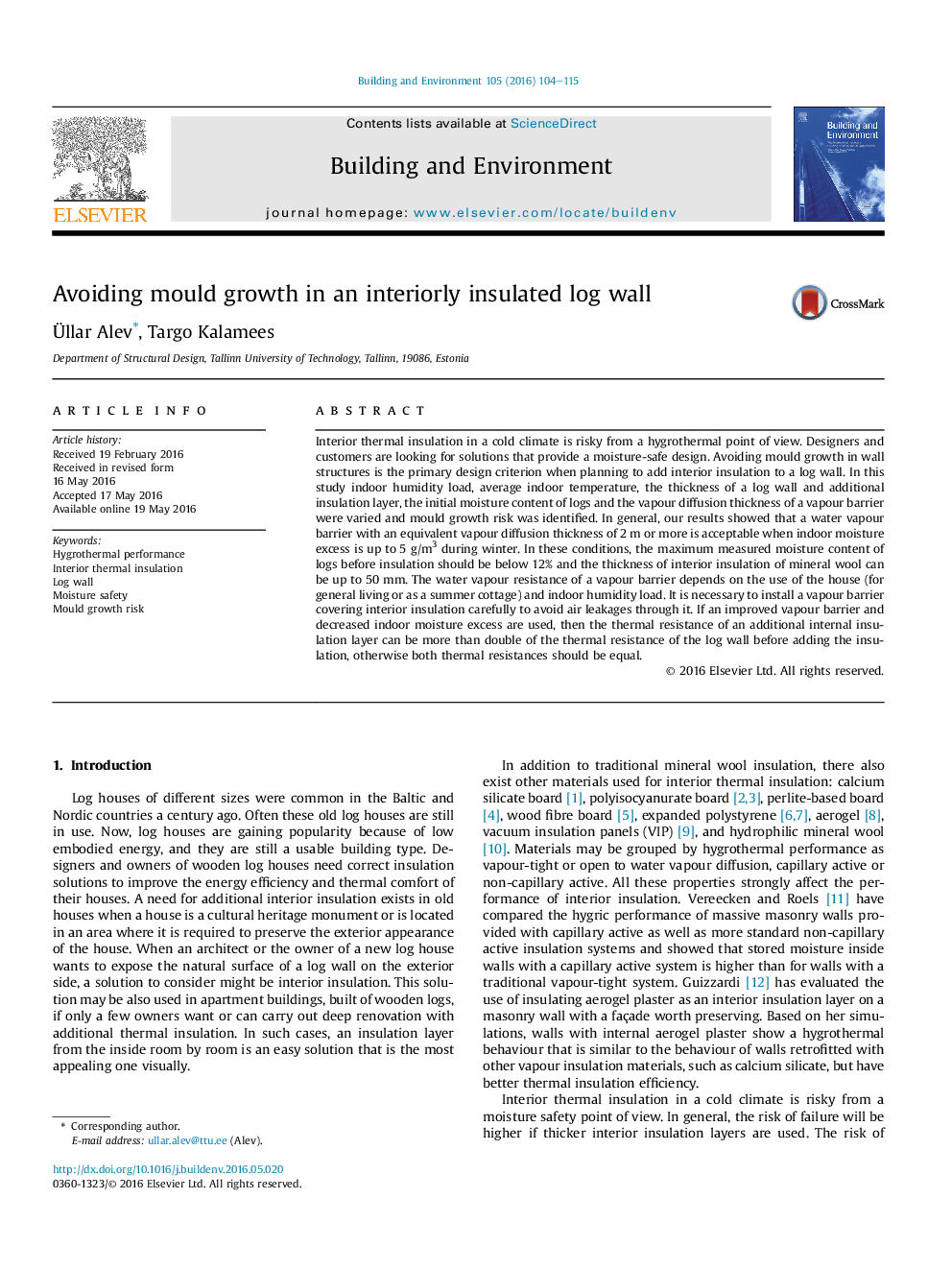| Article ID | Journal | Published Year | Pages | File Type |
|---|---|---|---|---|
| 6698957 | Building and Environment | 2016 | 12 Pages |
Abstract
Interior thermal insulation in a cold climate is risky from a hygrothermal point of view. Designers and customers are looking for solutions that provide a moisture-safe design. Avoiding mould growth in wall structures is the primary design criterion when planning to add interior insulation to a log wall. In this study indoor humidity load, average indoor temperature, the thickness of a log wall and additional insulation layer, the initial moisture content of logs and the vapour diffusion thickness of a vapour barrier were varied and mould growth risk was identified. In general, our results showed that a water vapour barrier with an equivalent vapour diffusion thickness of 2Â m or more is acceptable when indoor moisture excess is up to 5Â g/m3 during winter. In these conditions, the maximum measured moisture content of logs before insulation should be below 12% and the thickness of interior insulation of mineral wool can be up to 50Â mm. The water vapour resistance of a vapour barrier depends on the use of the house (for general living or as a summer cottage) and indoor humidity load. It is necessary to install a vapour barrier covering interior insulation carefully to avoid air leakages through it. If an improved vapour barrier and decreased indoor moisture excess are used, then the thermal resistance of an additional internal insulation layer can be more than double of the thermal resistance of the log wall before adding the insulation, otherwise both thermal resistances should be equal.
Related Topics
Physical Sciences and Engineering
Energy
Renewable Energy, Sustainability and the Environment
Authors
Ãllar Alev, Targo Kalamees,
